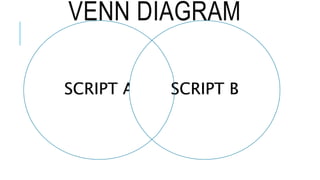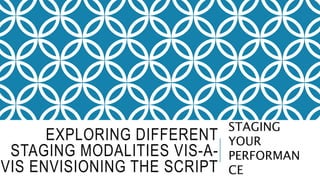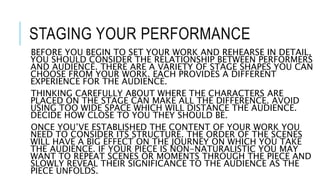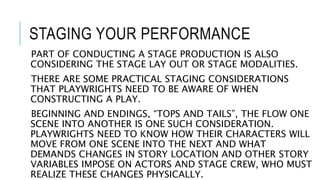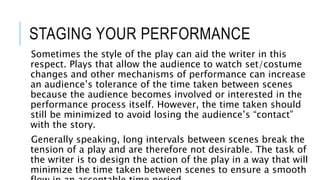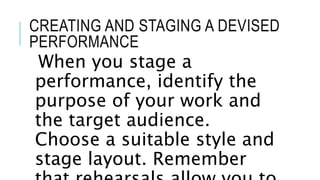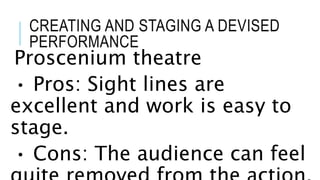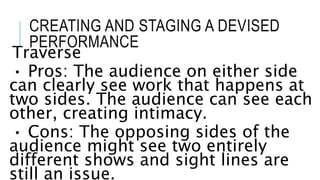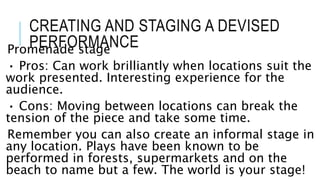This document discusses various considerations for staging a performance, including stage layout options, structure of the narrative, and logistics of scene changes. It addresses relationships between performers and audiences, placement of characters, and linear vs. non-linear narrative structures. The document also outlines practical staging elements like set changes, costumes, and minimizing time between scenes.
